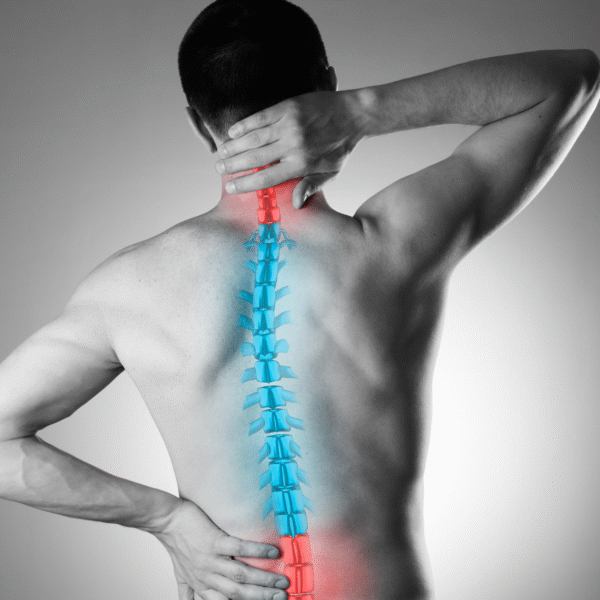
Daily Habits That Help You Manage Chronic Back or Neck Pain
Living with chronic back or neck pain can be physically and emotionally draining. While treatments such as physical therapy, injections, or regenerative medicine can provide relief, your everyday habits also play a huge role in how you feel. The truth is, your spine health isn’t just about what happens in the doctor’s office — it’s about the little things you do all day, every day.
By building supportive routines, you can improve mobility, reduce stiffness, and help prevent flare-ups. Here’s a deeper look at how to incorporate spine-friendly habits into your lifestyle.
1. Start Your Day with Gentle Movement
Why Mornings Matter for Pain Relief
Morning stiffness is common with chronic spine conditions because your muscles and joints have been still for hours. Gentle stretching gets blood flowing, warms up the tissues, and helps you move more comfortably.
Easy Morning Stretches to Try
- Neck Rolls – Slowly roll your head in a gentle circle to ease neck tension.
- Cat-Cow Stretch – On hands and knees, alternate arching and rounding your back.
- Side Bends – Stand tall and reach one arm overhead, bending slightly to the side.
Tip: Avoid fast or aggressive movements in the morning. Start slow and build up as your body warms.
2. Practice Good Posture Throughout the Day
How Poor Posture Affects Pain
Slouching or leaning forward increases pressure on spinal discs, leading to muscle strain and worsening pain over time.
Posture Reminders
- When Sitting: Keep feet flat, hips and knees at 90 degrees, and shoulders relaxed.
- When Standing: Distribute weight evenly on both feet, keep chin tucked slightly, and engage your core.
- When Using Technology: Hold your phone at eye level and avoid bending your head forward for long periods.
Helpful Tools
- Ergonomic office chair
- Lumbar support pillow
- Adjustable desk for standing and sitting options
3. Take Frequent Breaks from Sitting
Why Sitting Too Long Hurts Your Back and Neck
Prolonged sitting reduces blood flow to muscles and compresses spinal discs. This can lead to stiffness, muscle imbalances, and increased pain.
How to Break Up Sitting Time
- Stand or walk for 2–3 minutes every 30–45 minutes.
- Set a reminder on your phone or computer.
- Try “walk and talk” meetings instead of sitting.
Mini-Movement Ideas for Your Breaks
- Shoulder rolls
- Gentle torso twists
- Calf raises for circulation
4. Use Heat or Cold Therapy as Needed
When to Use Heat
Heat helps relax tight muscles and increase circulation. Use it before activity or stretching to loosen up.
When to Use Cold
Cold helps reduce swelling and numb sharp pain after physical strain. It’s most useful right after an injury or flare-up.
Safety Tips
- Limit applications to 15–20 minutes at a time.
- Always place a cloth between your skin and the heat or ice source.
5. Stay Hydrated
Why Water Matters for Spine Health
The discs between your vertebrae are made up of a jelly-like substance that requires adequate hydration to stay cushioned and flexible. Dehydration can cause discs to lose height, increasing pressure on the spine.
Hydration Habits
- Aim for 6–8 glasses of water per day.
- Infuse water with fruit for flavor.
- Limit dehydrating drinks like soda and alcohol.
6. Strengthen Core and Supportive Muscles
How Muscle Strength Protects the Spine
Strong muscles in your core, back, and hips help maintain spinal alignment and absorb impact during movement.
Low-Impact Strengthening Exercises
- Bridges – Strengthens glutes and lower back.
- Modified Planks – Builds core stability without straining your spine.
- Water Aerobics – Reduces joint pressure while providing resistance training.
Avoiding Overexertion
Start with a few repetitions and gradually increase. Listen to your body — pain during exercise may be a sign to modify the movement.
7. Prioritize Restorative Sleep
Why Sleep and Pain Are Connected
Poor sleep can lower your pain tolerance, increase inflammation, and slow recovery. Conversely, good sleep helps your body repair tissues and regulate pain signals.
Creating a Spine-Friendly Sleep Setup
- Use a medium-firm mattress for balanced support.
- Choose a pillow that keeps your head aligned with your spine.
- Side sleepers can place a pillow between the knees to reduce lower back strain.
Bedtime Habits for Better Rest
- Keep a consistent bedtime and wake time.
- Avoid caffeine in the afternoon and evening.
- Practice relaxation techniques before bed.
8. Manage Stress to Reduce Tension
How Stress Affects Pain
Stress triggers muscle tightness, particularly in the neck and shoulders, and increases pain perception in the brain.
Stress-Relief Practices to Try
- Deep breathing exercises (inhale for 4 counts, exhale for 6)
- Gentle yoga or tai chi
- Journaling thoughts and feelings
- Listening to calming music or guided meditation
Consistency Over Perfection
You don’t need hours of stress management — even 5–10 minutes a day can help.
9. Pay Attention to Your Body’s Warning Signs
Early Intervention Prevents Flare-Ups
If you notice increased stiffness, tingling, or pain after certain activities, adjust before symptoms worsen.
Practical Adjustments
- Switch to lower-impact exercises temporarily.
- Use extra support (brace or cushion) during long activities.
- Schedule rest days after heavy physical exertion.
10. Work Closely with Your Healthcare Provider
Why Professional Guidance Matters
Your provider can help identify underlying causes, recommend targeted exercises, and track your progress. They may suggest physical therapy, regenerative injections, or minimally invasive procedures alongside lifestyle changes.
Be Open and Honest
Share what’s working, what’s not, and any new symptoms you experience. This helps your care team fine-tune your treatment plan.
The Bottom Line
Managing chronic back or neck pain is a long game, not a quick fix. The most successful patients combine medical care with healthy daily habits to protect and strengthen their spine. By starting small and being consistent, you can take meaningful steps toward more comfortable, active living.
Leave a reply


